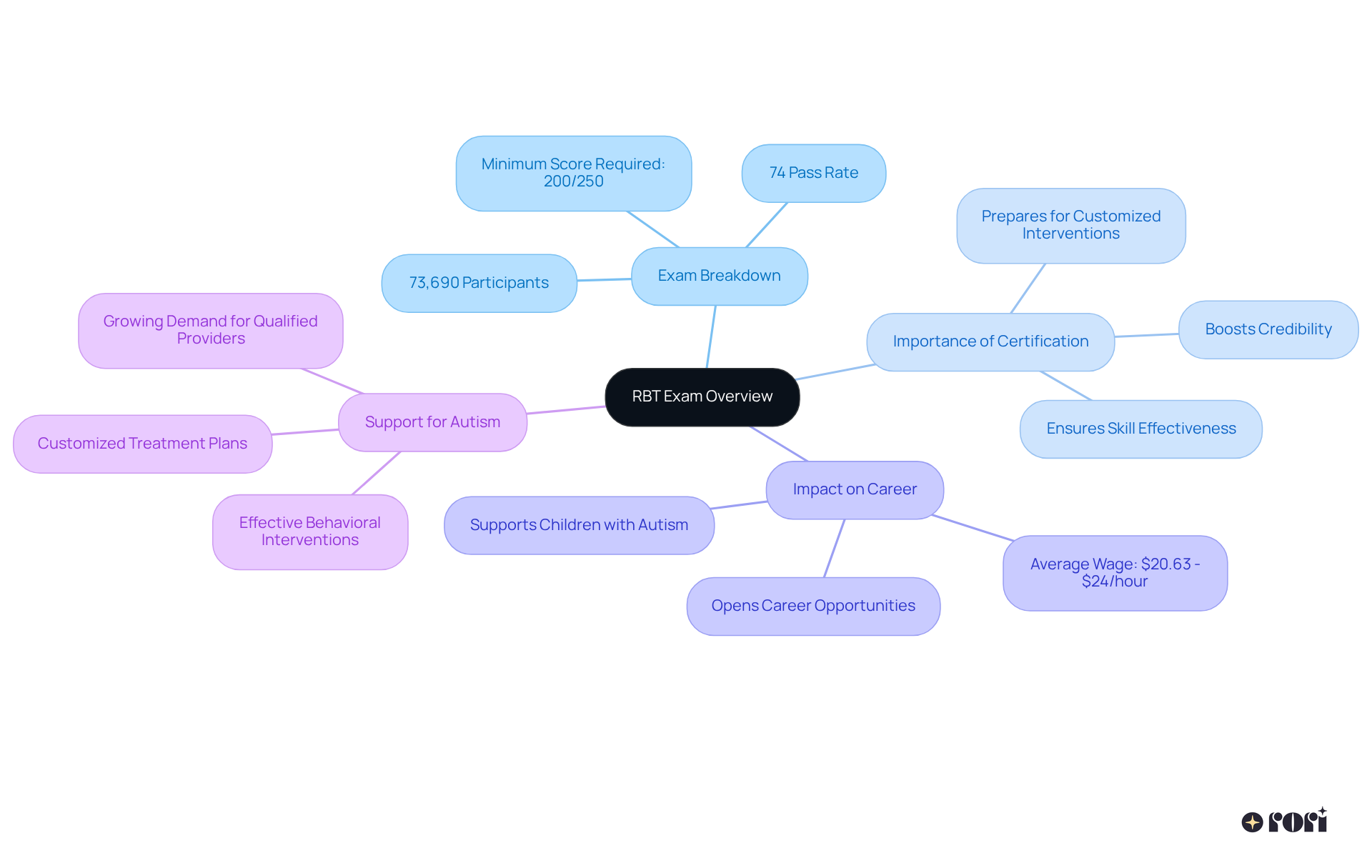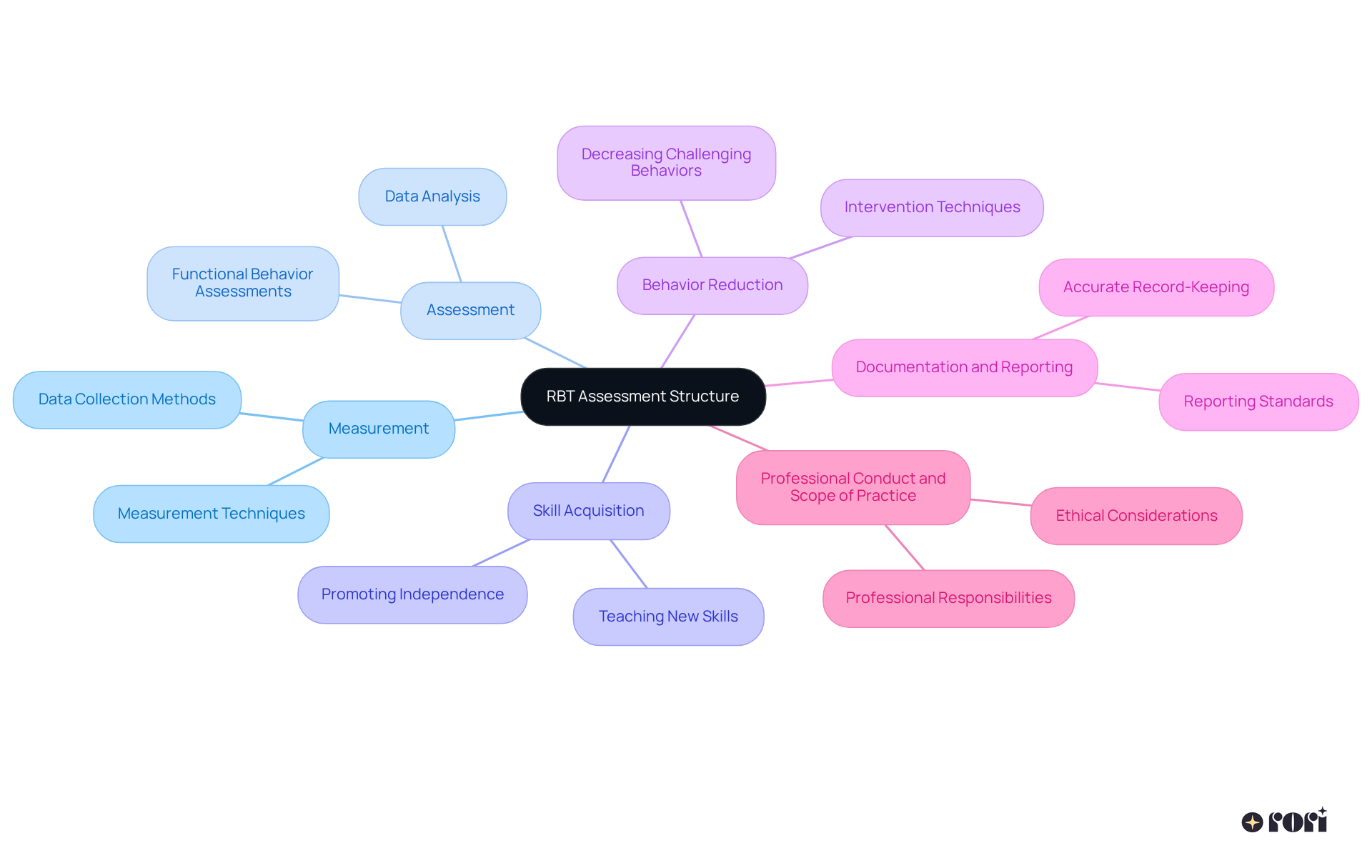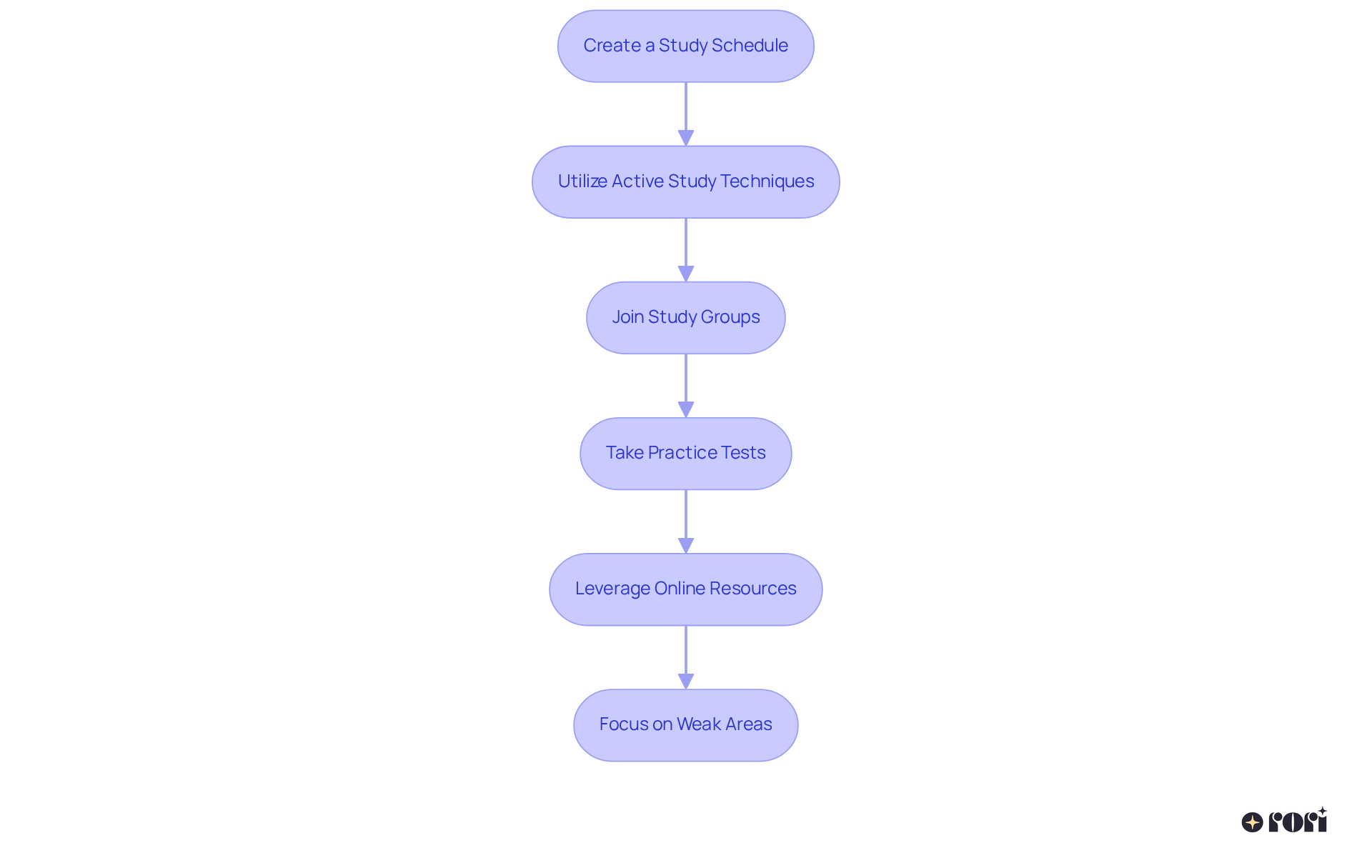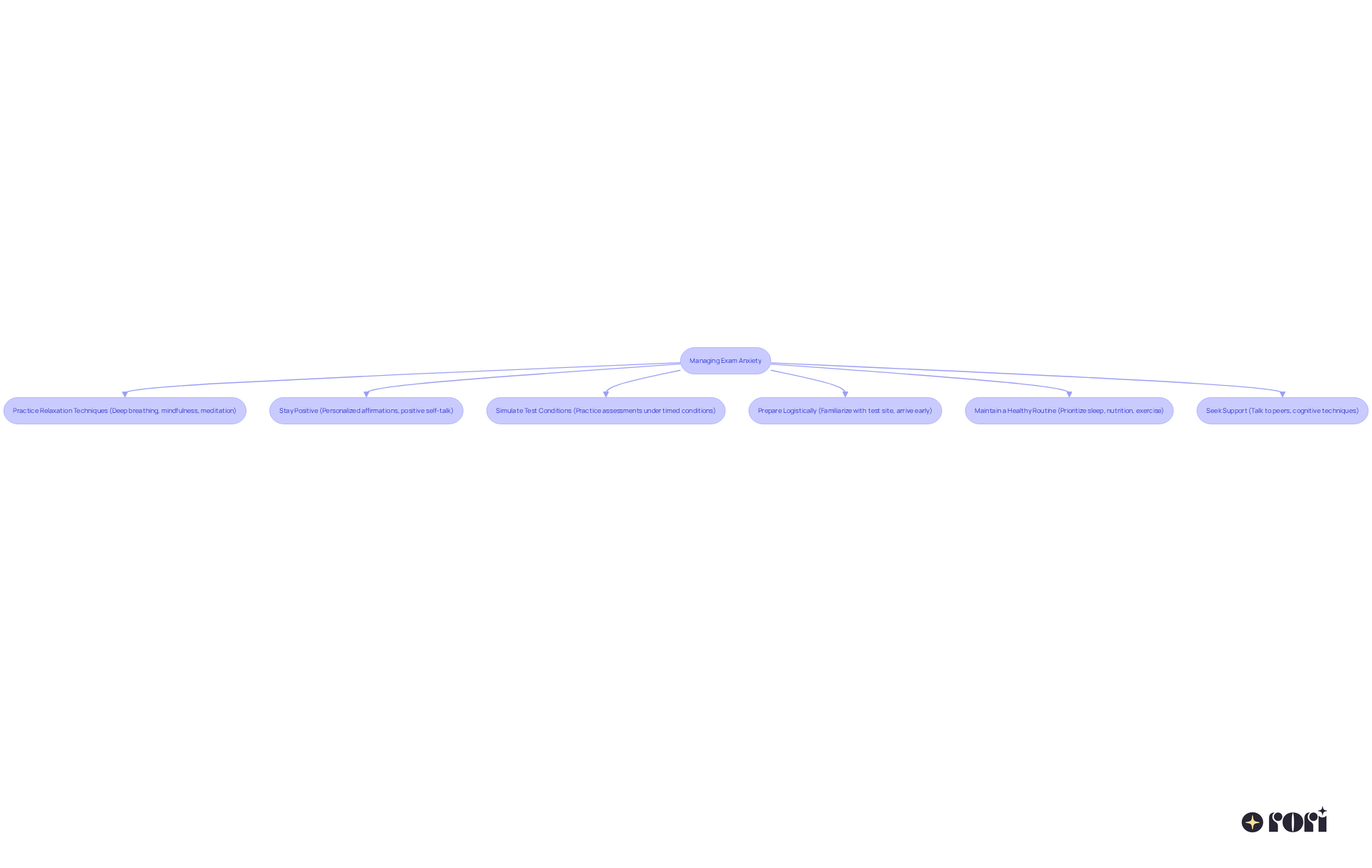This article offers a friendly dive into the RBT exam, emphasizing its importance in the world of applied behavior analysis. It’s packed with effective study strategies that can really boost candidates' chances of success. You’ll find key insights about the exam's structure, core content areas, and some practical tips to help manage exam anxiety. All of this highlights just how crucial thorough preparation is for passing the exam and building credibility in this field. Let’s explore this together!
The RBT exam is a crucial step for those looking to make a difference in applied behavior analysis, especially for those passionate about helping children on the autism spectrum. Every year, many candidates embark on this journey, making it vital to understand the exam's structure and core content areas for success. Yet, as pass rates vary, it’s common for candidates to face the challenge of preparing effectively while managing rising anxiety.
So, what can candidates do to not just master the exam content, but also tackle the psychological hurdles that often come with high-stakes testing? Let’s explore this together!
The RBT exam breakdown is a crucial step for anyone aiming to establish a career in applied behavior analysis (ABA). It’s designed to check how well individuals understand key concepts and how they can apply these ideas in real-life situations. When someone passes this exam, it not only shows their skills but also boosts their credibility in the field.
This certification is particularly crucial for those working with children on the autism spectrum. It ensures they have the necessary skills to deliver effective behavioral interventions. In 2023, around 73,690 people participated in the RBT exam breakdown for the first time, and the pass rate was 74%. This highlights how significant the RBT exam breakdown is on the path to certification.
The RBT assessment opens the door to a fulfilling career, allowing practitioners to make a real difference in the lives of children and their families. Plus, having this certification means that professionals are better prepared to customize interventions to fit each child’s unique needs. As the demand for qualified autism care providers grows, the RBT certification remains essential in ensuring high-quality support for children with autism and their families. Let’s explore this journey together!

The RBT assessment includes 85 multiple-choice questions, made up of 75 scored items and 10 unscored pilot questions. You’ll have 90 minutes to complete the exam, which covers six core content areas:
Getting familiar with these subject areas is crucial for focused learning and achieving great results on the RBT exam breakdown. Recent trends show that first-attempt pass rates for the RBT exam breakdown have declined, emphasizing the need for thorough preparation strategies. Utilizing high-quality resources and taking practice assessments can really make a difference. By mastering these key areas, you can boost your chances of success on the RBT exam breakdown. Let’s explore this together!

To prepare effectively for the RBT exam, candidates should consider some friendly study strategies:
Create a Study Schedule: Set aside specific times for studying each content area. It’s all about balance! Consistency is key; regular review periods can really make a difference in your test results. Aim to prepare for 1-3 months before the exam to boost retention and ensure you master the RBT Task List, which is critical for understanding the RBT exam breakdown and passing the board assessment.
Utilize Active Study Techniques: Get hands-on with your studying! Use flashcards, take practice quizzes, and summarize key concepts. Active learning methods can really help improve retention and understanding—essential for showing you're ready to be a qualified Registered Behavior Technician®.
Join Study Groups: Teaming up with peers can really enhance your understanding and offer fresh perspectives on tricky topics. Online forums and study groups are a great way to discuss challenging subjects and share study tips, empowering everyone with ABA principles and strategies to support children’s behavioral goals.
Take Practice Tests: Simulating the test environment with timed practice assessments can build your confidence and sharpen your time management skills. Familiarizing yourself with the test format is essential since the RBT exam breakdown consists of 85 multiple-choice questions to be completed in 90 minutes. Regular practice assessments can help you track your progress and readiness for the RBT exam breakdown, ensuring you're well-prepared to showcase your knowledge of the RBT Task List.
Leverage Online Resources: Don’t forget to tap into reputable study guides, videos, and forums to boost your learning. Websites like the BACB and various ABA-focused platforms offer valuable materials that can enrich your preparation and provide insights into what’s needed for the RBT certification.
Focus on Weak Areas: Take a moment to identify content areas where you feel a bit less confident. Dedicating extra time to these areas is crucial for success, as understanding the RBT exam breakdown and its competencies is key. And remember, if you don’t pass the assessment, you can use feedback from your score report to prepare for a retake.
By using these strategies, you can enhance your preparation and approach the exam with greater confidence, boosting your chances of passing on your first attempt. Let’s explore this together!

Exam anxiety is a common hurdle for many candidates, impacting around 10 to 40 percent of students. But don't worry—there are effective strategies to help manage it:
By putting these strategies into action, candidates can tackle challenges and approach the RBT exam breakdown with a calm and focused mindset, ultimately boosting their chances of success. Remember, a little anxiety can actually enhance performance; the goal is to manage it, not eliminate it. Empowering caregivers with ABA principles and strategies to support children's behavioral goals through active involvement and data collection is vital as you gear up for this important certification. Let’s explore this together!

As we wrap up, it's clear that the RBT exam is a crucial step for those passionate about applied behavior analysis, especially for those looking to support children with autism. This certification not only showcases your skills and knowledge but also boosts your credibility in this important field. With the increasing need for qualified practitioners, a solid understanding and preparation is key to success.
Throughout our discussion, we've touched on various important aspects of the RBT exam, like its structure, core content areas, and effective study strategies. We broke down essential topics such as:
We highlighted the importance of mastering these areas. Plus, we shared practical study tips, such as:
These are crucial tools for anyone aiming to pass on their first try.
Ultimately, preparing for the RBT exam goes beyond just passing a test; it’s about equipping yourself with the knowledge and skills to truly make a difference in the lives of children and families. By using effective strategies and keeping a focused mindset, you can tackle the challenges ahead with confidence. As the value of the RBT certification continues to grow, taking proactive steps in your preparation will ensure you’re ready to embrace this vital role in the field of applied behavior analysis. Let’s explore this journey together, and remember, we’re here to support you every step of the way!
What is the RBT exam and why is it important?
The RBT exam is a crucial assessment for individuals pursuing a career in applied behavior analysis (ABA). It evaluates their understanding of key concepts and their ability to apply these ideas in real-life situations. Passing the exam enhances credibility in the field.
Who benefits from the RBT certification?
The RBT certification is particularly important for those working with children on the autism spectrum, ensuring they possess the necessary skills to deliver effective behavioral interventions.
How many people took the RBT exam in 2023, and what was the pass rate?
In 2023, approximately 73,690 individuals participated in the RBT exam for the first time, with a pass rate of 74%.
What opportunities does the RBT assessment provide for practitioners?
The RBT assessment opens the door to a fulfilling career in ABA, allowing practitioners to make a meaningful impact on the lives of children and their families.
How does RBT certification contribute to the quality of care for children with autism?
Having RBT certification prepares professionals to customize interventions to meet each child's unique needs, ensuring high-quality support as the demand for qualified autism care providers increases.